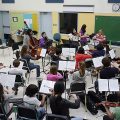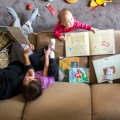
Humans are exposed to sounds the moment they’re born. Those sounds allow us to learn about our environment. However, sometimes those sounds become overwhelming. The excessive unwanted sounds come with a multitude of negative consequences, especially for children.
Sources of noise pollution
Kids are exposed to noise pollution at home, school, and on the road. When you’re doing daily chores, you’re exposing your kids to unwanted noise. Things like the vacuum cleaner, washing machine, and mixer make quite a noise.
Even kids toys can be annoying sources of sound pollution. You’re familiar with those, right? The type of toys that teach children words, numbers, and various nursery rhymes.
The harmful effects of noise pollution on children
Your children’s health is also at risk when sound pollution is left unchecked. One study suggests that noise pollution has adverse effects on children and adolescents. Noise-induced hearing loss is just one of them. When you also count increased blood pressure, insulin resistance, hypertension, and cardiovascular diseases, then you’ll know that noise pollution is too serious to ignore.
How does noise affect children’s learning?
Children are especially vulnerable to the harmful effects of environmental noise. According to a research, sound pollution is bad for learning. At school, the simple sound of people chattering in class can hinder children’s learning process and make it harder for them to process what the teacher is explaining. In some cases, children will also find it hard to consolidate short-term memories into long-term memories.
How to deal with sound pollution at home
Soundproofing is one of the best ways to deal with sound pollution at home. This is especially true if your home is near a busy street or a high-noise area.
Try adding extra drywall and acoustic panels to absorb sounds – prevent the sounds from bouncing off the ceilings and walls. You can also use acoustical caulk to plug sound leaks on ceiling fixtures, switch boxes, and door casing. Sounds difficult? Just add some rugs on the floor. That’s a great first step in reducing noise.
Do note that you can also block noise with more noise. For instance, if you have roadwork in the neighborhood, you can play some comforting ambient sound to let your kids take their nap. The ambient sound will drown out the annoying noise so they’re less noticeable.
How to deal with sound pollution at school
Dealing with sound pollution at school is a lot trickier. First, schools may not even have the budgeting luxury to install noise-reducing options. To make matters worse, some people think that noise is just a natural part of school life. That’s what you get when you cram hundreds of kids in the same building.
It’s best to sit on the same desk with the teachers and the student council to talk about creating a quieter learning environment




